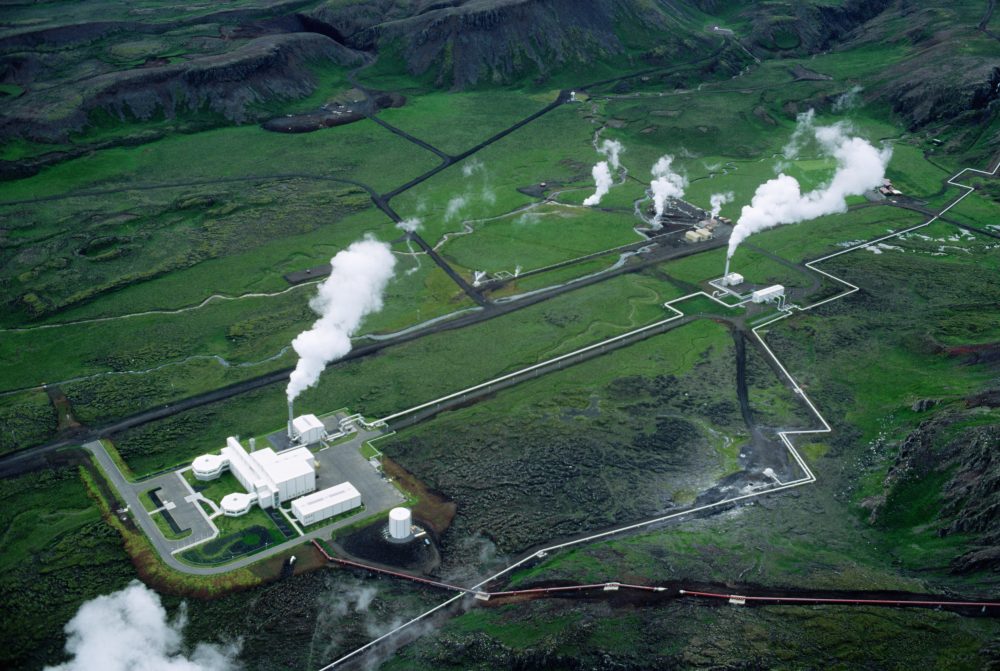Enhanced Geothermal Energy Could Be the Next Zero-Carbon Hero — Gravel2Gavel Construction & Real Estate Law Blog — May 9, 2024
Hydrogen, solar, wind—and even microwave beams from outer space—are a few of the alternative energies being explored as the world strives to cut the cord on carbon emissions. Recently, advancements in geothermal energy technologies appear poised to significantly expand geothermal’s reach. These new methods are varyingly referred to as engineered, enhanced or advanced geothermal systems (collectively referred to here as EGS), have recently made strides in scalability and grabbed the attention of changemakers and, if successful, may lead to EGS playing a major role in the clean energy transition. The technique creates no emissions and is virtually limitless (it pulls from heat generated by the Earth’s core), and can provide constant baseload power, making it appealing to green-minded investors. This article calls attention to the progress and variety of EGS projects and proposals that Pillsbury sees as part of the ongoing energy transition.
People have long been drawn to geothermal energy, with Paleo-Americans settling at hot springs some 10,000 years ago. In 1892, Boise, Idaho, became the first town to establish a district heating system that piped naturally occurring hot water from underground and into homes. It would take another 70 years for other cities to replicate the feat, but now 17 U.S. districts use such systems, along with dozens more worldwide.
Despite these successes, traditional geothermal systems are geographically limited to areas with naturally occurring hydrothermal resources, where natural heat, subsurface water, and permeability converge near the Earth’s surface. As a result, despite its potential as a source of clean baseload power, geothermal energy currently represents only about 2.5% of U.S. renewable electricity generation. These limitations have, traditionally, also hampered interest and investment in the sector.
In answer to these limitations, researchers have worked since the 1970s to develop man-made versions of geothermal systems, which in theory could be located just about anywhere in the world. Essentially, these new technologies seek to overcome the need for geothermal facilities to be located near hydrothermal resources by drilling deeper, and extracting heat from dry, less permeable rock. Some companies are even pursuing development of superhot rock energy, a high-temperature form of geothermal energy. These companies plan to go kilometers deep, where rocks reach extreme temperatures. This would allow geothermal plants to extract heat with a much higher energy density, making these theoretical plants even more efficient. With a 2022 $74 million DOE initiative aimed at championing new generation geothermal systems while also reducing their costs, many companies are actively pursuing projects in this arena.
There are also potential ways geothermal energy technologies can provide additional services. Pillsbury is currently assisting clients in finding ways to extract lithium and rare earths, useful in storing and producing renewable energy, from the brine left at the end of certain types of geothermal processing.
If all goes as investors and boosters hope, EGS has the potential to be a win for safe and abundant green energy. Ahead, we look at the need-to-know details about this emerging resource.
- How it Works. A naturally occurring geothermal system (hydrothermal energy) needs heat, liquid and permeability in order to energize a power grid. All three components only exist together in regions with active volcanoes, hot springs and geysers—but hot underground rock is present all over the place on its own, often a couple of miles or more below the surface. Engineers aim to create man-made geothermal systems by drilling deeper into the Earth than traditional geothermal systems and supplying fluids in order to capture heat from dry, less permeable rock.
- Feasibility. The DOE says that the United States has more than five terawatts of heat resources under its soil, which would be enough to meet the electricity needs of the entire world if tapped into. A perk of EGS is that unlike wind and solar power, it is completely unimpacted by weather and does not require sunlight. The energy could be available 24 hours per day and requires a minimal land footprint.
Drilling deep enough to tap into the needed high temperatures makes for a more fraught, and also more expensive, process than tried-and-true resources like natural gas—at least in the early stages of development. The further down pipes go, the more heat is available; with higher temperatures, EGS becomes more viable and cost effective, particularly in superhot rock scenarios where heat is extracted at much higher densities. But such deep vertical and lateral connecting pipes are new territory.
Advances in horizontal drilling and magnetic sensing that have propelled the oil and gas industries forward could now be adapted for geothermal techniques. A distinctive challenge is creating tools that can withstand extreme temperatures so deep in the Earth’s crust. At Utah’s DOE-funded Frontier Observatory for Research in Geothermal Energy (FORGE), operators have dealt with melting equipment.
- Legal Challenges. Developers also must contend with federal and state environmental laws, permitting and other potential legal hurdles. In the United States, complex legal frameworks for both subsurface mineral and water rights have traditionally impacted geothermal industry developments. Regarding subsurface mineral rights, key statutes like the Mining Law of 1872 and the Mineral Leasing Act of 1920 have both facilitated and constrained the development of geothermal energy. By allowing the separation of mineral rights from surface land ownership, these laws have opened pathways for geothermal energy developers to lease or acquire rights to exploit heat resources beneath the land. However, these laws may also require that developers navigate complex federal and state regulations while dealing with such agencies as the Bureau of Land Management and the U.S. Forest Service. This can in turn create bureaucratic hurdles, raise costs, and ultimately stifle progress of geothermal energy projects. For example, geothermal projects on federal lands or that need permitting from a federal agency may require an extensive review under the National Environmental Policy Act.
Regarding subsurface water rights in the U.S., both the Doctrine of Prior Appropriation in the West and Riparian Rights in the East collectively exert a nuanced impact on geothermal energy development. In regions where geothermal resources are abundant, the allocation and use of water for geothermal power generation must align with state-specific water rights doctrines, which can either enable or limit the viability of such projects. Thus, state regulations and the oversight of state agencies are crucial in determining how geothermal energy can be sustainably and equitably developed within the complex legal landscape of water rights.
- Projects. In February, the DOE announced that it will dedicate up to $60 million to three pilot projects by Chevron New Energies, Fervo Energy and Mazama Energy. Using funding from the Bipartisan Infrastructure Law, the agency wants to demonstrate the potential of EGS to power the equivalent of 65 million homes across the United States. A second-round funding opportunity is still on the horizon for EGS programs in the eastern United States.
Google announced in November 2023 that it is now pumping geothermal electricity into the Nevada power grid and, in turn, to its data centers in the region. The tech company partnered with Fervo for the smaller-scale, next-generation project and is exploring how to expand these capabilities. Fervo has also broken ground on a new facility in Utah, expected to begin delivering power by 2026 and be the world’s largest geothermal energy plant. Additionally, in June 2023, Chevron New Energies Japan and Mitsui Oil Exploration Co. finalized plans for the pilot testing of advanced geothermal systems in the Niseko region of Hokkaido, Japan, to explore the possibility of commercial-scale heating.
Eavor has several deals in progress, including $96 million in grant financing from the EU Innovation Fund for a project outside Munich, Germany (where the company says it will generate its first wave of power by the summer of 2024); a contract with the U.S. Air Force to provide geothermal energy to the Joint Base San Antonio facility in Texas; a Getech partnership aimed at identifying advanced geothermal sites in Latin America; and more.
Alongside the DOE, the National Renewable Energy Laboratory (NREL) is also researching approaches and marketability for advanced geothermal. On a smaller scale, companies like EcoSmart Solutions are building communities of homes heated and cooled entirely by geothermal infrastructure.
As Pillsbury has separately detailed, the Biden administration wants to halve greenhouse gas emissions by 2030 and, by 2035, fully transition to a carbon-free grid. The EU aims for at least a 55% reduction in greenhouse gas emissions by 2030 (as compared to 1990 numbers) and intends to direct 30% of its overall budget to climate action between 2021 and 2027. The push to hit these goals means that public and government interest have begun to expand beyond low-carbon energies like solar and wind, and into next-generation ideas. Advanced geothermal is still a young solution amid a transitioning legal landscape—and some potential engineering challenges—but with funding to get it off the ground, it may prove to be a key piece of the zero-carbon puzzle. Pillsbury visualizes success for many applications of geothermal energy as an integral component of the energy transition.
RELATED ARTICLES
Carbon Sequestration Can Combat Global Warming, Sometimes in Unexpected Ways
Natural Hydrogen May Seem New in Town, but It’s Been Here All Along
Lunar Natural Resources: A Tour of a New Horizon






